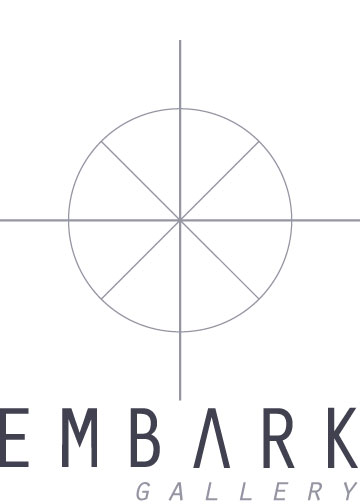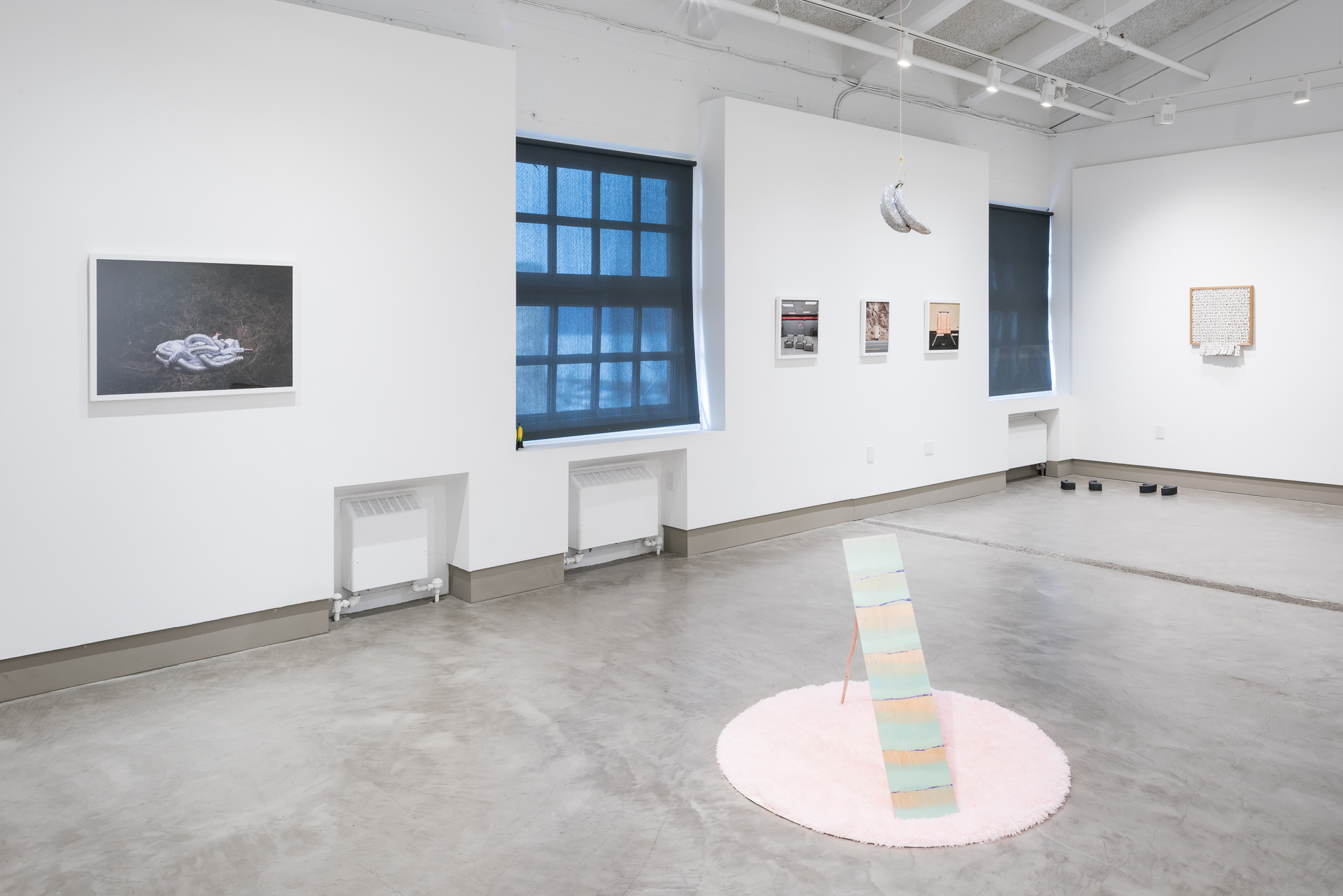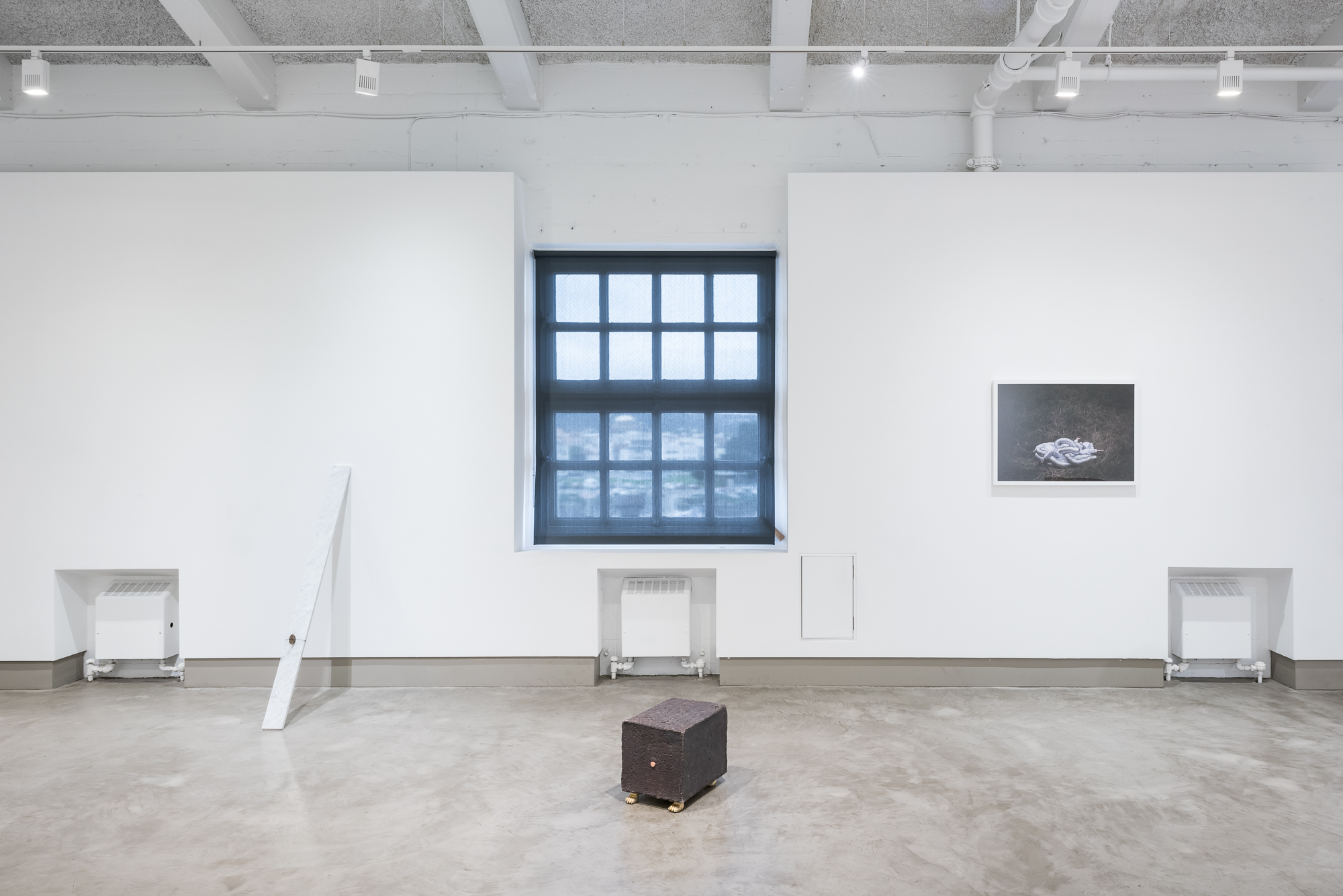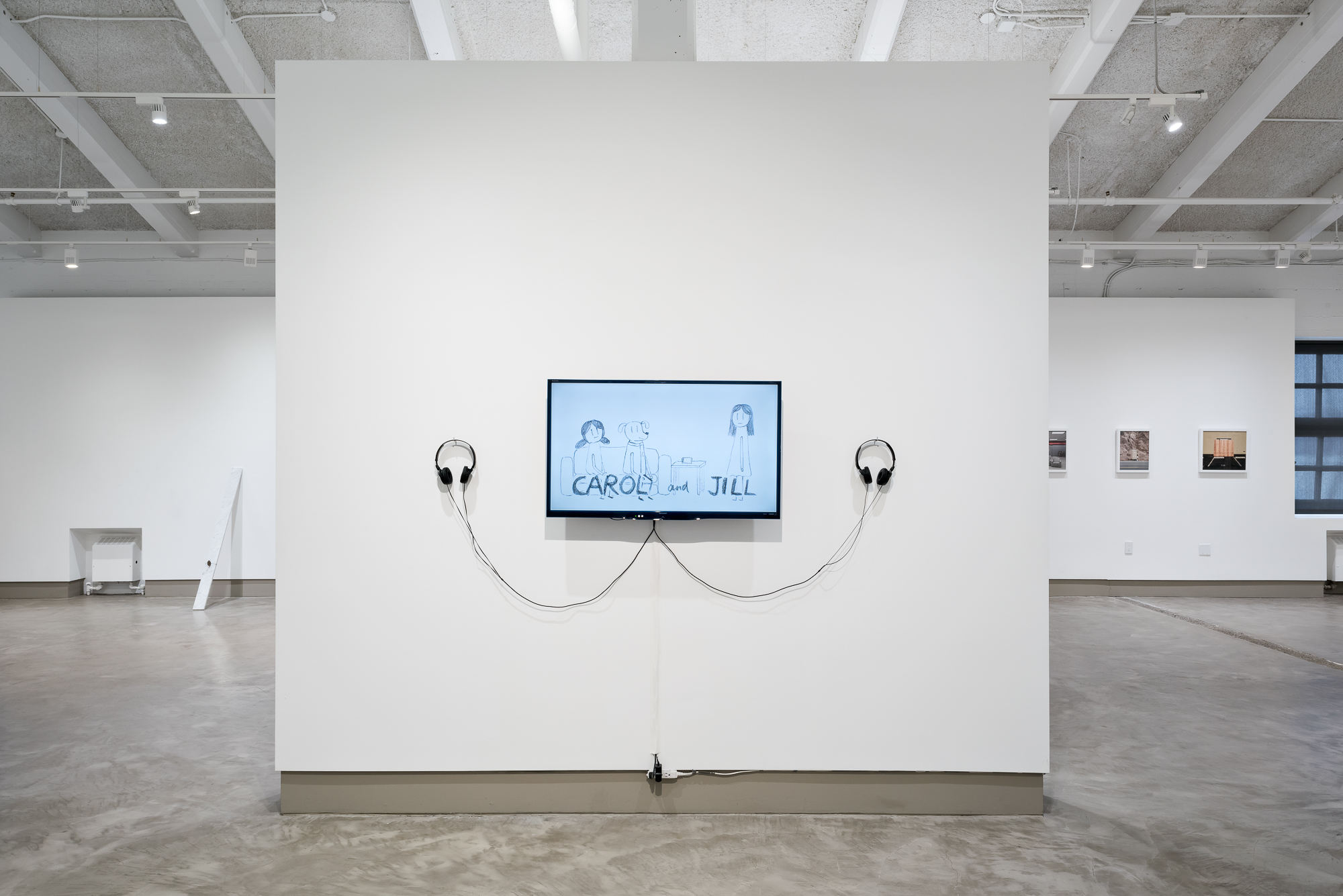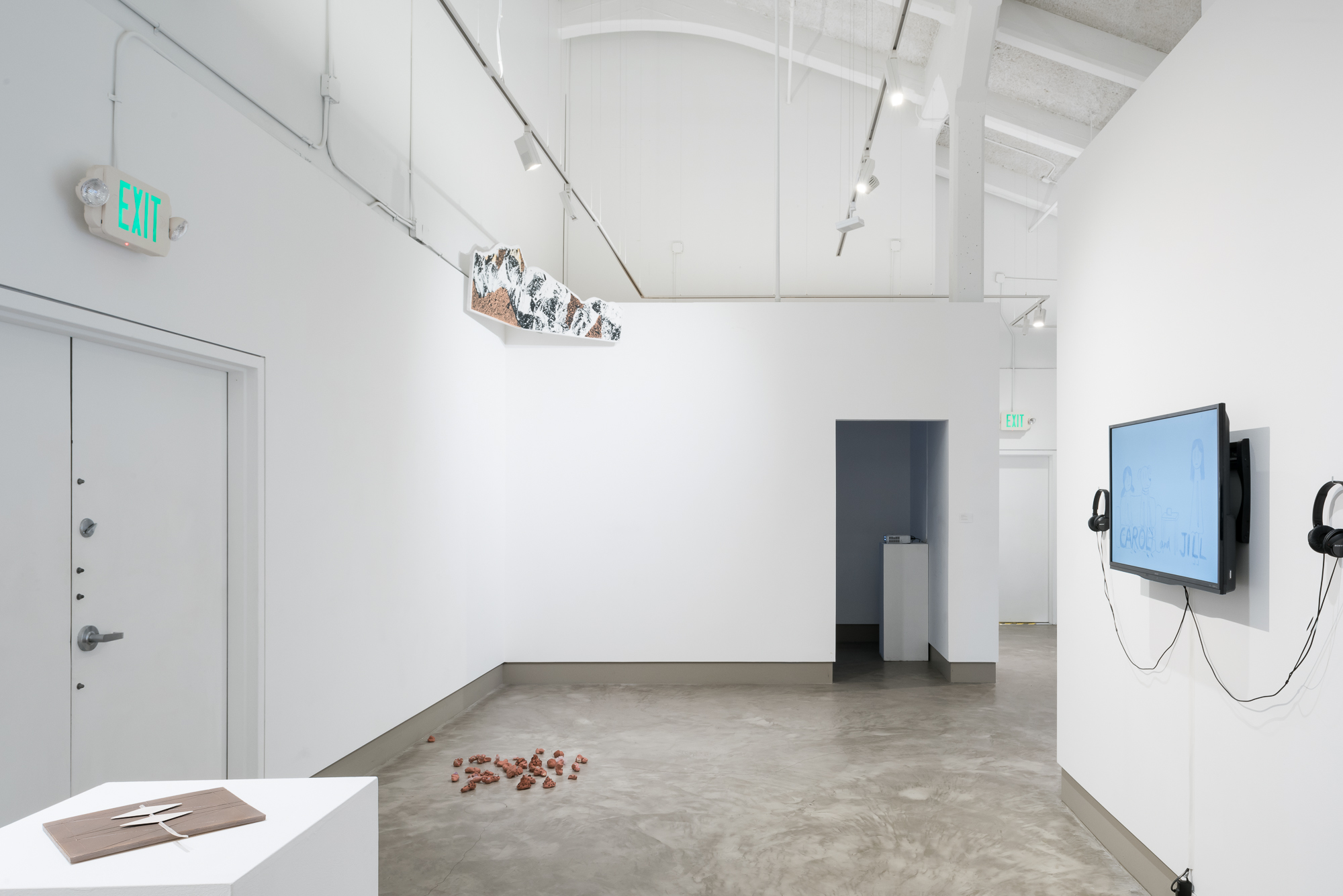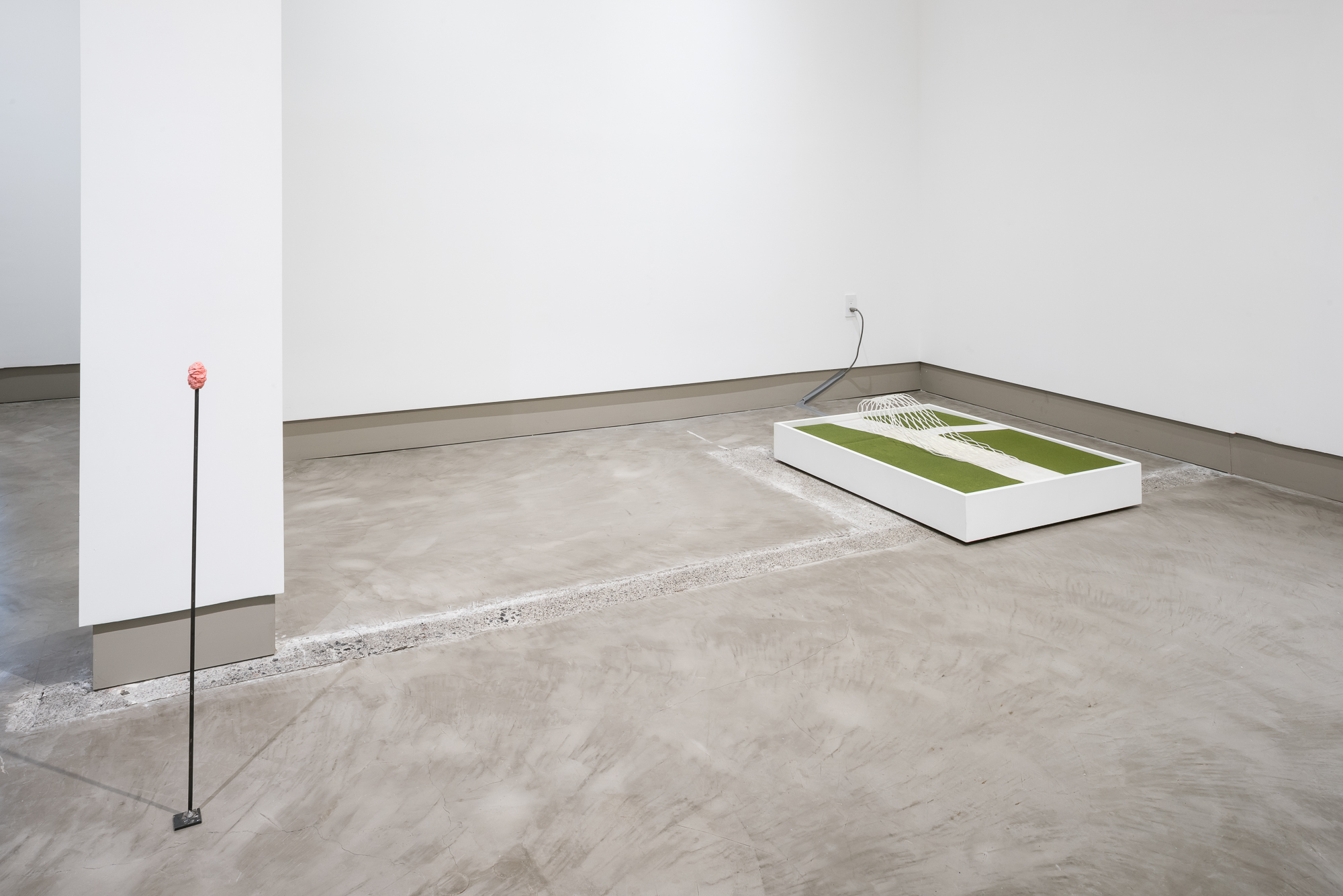Laughter and Tears
02/08/19-03/30/19
Laughter and Tears showcases a group of eleven artists who use humor and play to engage in a dialogue with and subvert the world around them. Across various disciplines and mediums, they use humor as a tool to think critically about social and political events.
Brian Bartz (UC Berkeley) uses technological systems such as Google Maps to explore and articulate a perception of the world at large. Bartz creates interactive video installations to deconstruct how the internet network systems and the cloud alter our perception of supply chains and geological depletion.
Calum Craik (SFSU) is an artist who works in video, sculpture, and installation. His sculptures, assembled using found materials with personal and sociopolitical significance, often take on a poetic and absurd sensibility. The work entices viewers to make connections between the materials and their emotional weight for both the viewer and the artist.
Ricki Dwyer (UC Berkeley) is an interdisciplinary artist who currently works primarily in textile and installation. Through weaving, a medium deeply connected to culture and tradition, Dwyer communicates ideas of temporality and transformation. Is it a palm tree or a stream of pee from behind a curtain? Whatever viewers imagine behind the curtain implicates them in an act of abstracted voyeurism.
Zoe Eagan-Gardner (CCA) is a sculptor and installation artist whose work brings to mind both Dada and Funk Art. Childlike and somewhat austere, the work inspires stream of conscious thought and imagination. Eagan-Gardner uses sculpture to recount stories of her childhood and coming of age experiences. Her sculptures exist somewhere between being seductive and hilarious.
Neil Griess (Stanford) is an artist who primarily works in painting and sculpture. Through the recontextualization of objects taken from day-to-day life, his sculptures are an absurd and subversive way of seeing the social structures of the world at large.
Becca Imrich (CCA) is an artist whose work is based in sculpture and installation. Through text, punctuation, and other visual markers, Imrich questions codified structures and systems. Imrich uses her background in sociology to supplement and enhance the conceptual rigor of her work.
Nathan Kosta (SFSU) is an artist who works within the disciplines of photography, video, and sound. Kosta seeks out absurdity in mundane day-to-day moments and creates humor through the lenses of portraiture and found landscapes.
Heesoo Kwon (UC Berkeley) created “Leymusoom,” a continuously evolving religion that supports a feminist utopian worldview. Through performance, sculpture, and social practice, Kwon invites everyone to imagine a world that provides love and support to all of Earth’s creatures.
Leslie Samson-Tabakin (SFSU) is an installation artist who uses whimsy, absurdity, and material seduction to draw viewers in and provoke questions. Her installations feel both familiar and otherworldly and tap into the multilayered experiences and emotions of the human psyche.
Hannah Tuck (SFSU) is an interdisciplinary artist who currently makes video and text based works. In her text pieces, she uses unedited and poignant excerpts from her diary to communicate feelings of fear and anxiety. Her raw installations evoke resonant feelings of familiarity and shared intimacy.
Yiling Zeng (SFAI) is a filmmaker whose work examines ideas of a multivalent identity. In her surreal short film “Carol and Jill,” Zeng explores an immigrant narrative through the relationships between cartoon sea creatures who try to make sense of life on land.
This exhibition is curated by Natasha Loewy and Kristen Wong, winners of Embark’s call for curatorial proposals and MFA candidates at SFSU.
Artists: Brian Bartz, Calum Craik, Ricki Dwyer, Zoe Eagan-Gardner, Neil Griess, Becca Imrich, Nathan Kosta, Heesoo Kwon, Leslie Samson-Tabakin, Hannah Tuck, Yiling Zeng
